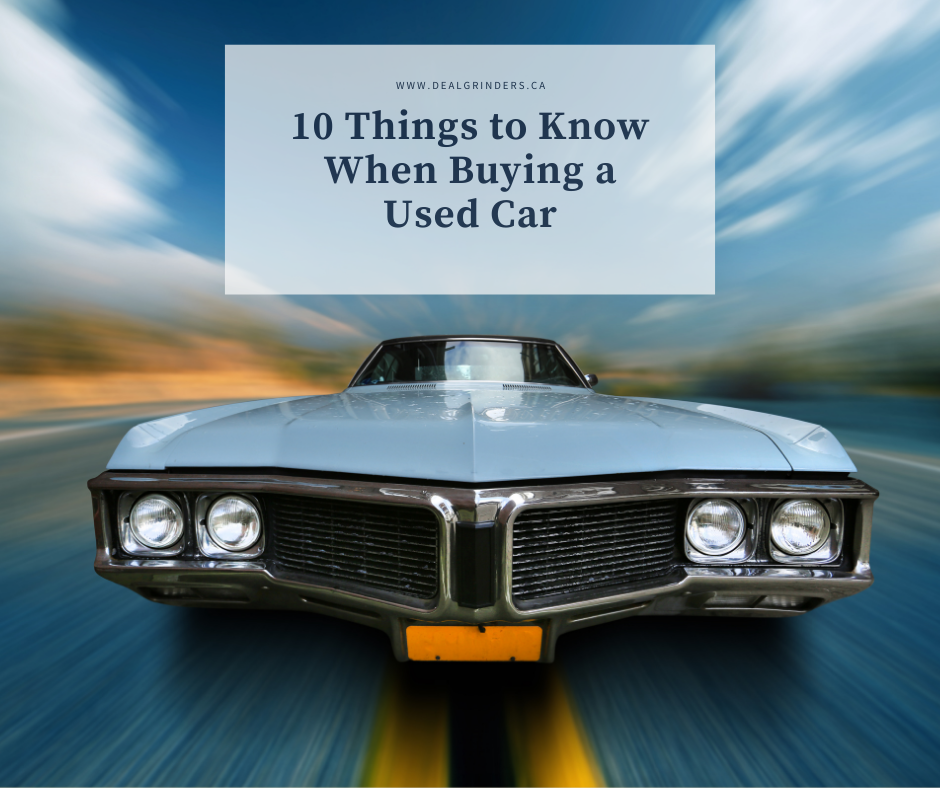Are you in the market to buy a used car? We will discuss ten essential things that will help you save money and time toward purchasing a used vehicle from a private seller or a dealer. This video will help you make the right decision and simplify the negotiation process.
1. Wants and Needs
Accessing your needs is the first step in the process of buying a used car. The market is full of choices and options, but your search should start from basic.
First and foremost is your budget.
The second is a type of vehicle that fits your need. What kind of vehicle works better, SUV or sedan? What will be the primary use of this vehicle? How much you drive daily?
Let’s assume you drive 100 km a day. Then it would be best if you have something cheap on gas. With the fuel price going up every day, you don’t want to put most of your money towards gas. In this case, electric and hybrids are the options to be considered.
Let’s say you are a family person and have two young kids, then SUV or Van is the answer. SUV and Vans offer a lot bigger cargo space compared to sedans.
No matter what you are buying, let’s go through other elements that you should know.
2. Exterior of the Car
Let’s start with the body condition of the car before making the purchase. When checking the exterior, you should look for scratches, dents, or color differences in the paint. Try to look a little underneath of car body and check for rust spots. Some cities use salt to melt the snow in winters. Salt is the enemy of metal, and cars trigger rust early if not washed regularly. You should carefully examine all lights and lenses, tires, and windshield to identify any damage that needs urgent care.
3. Interior of the Vehicle
One of the most critical parts of the checklist is checking the interior of the car you are going to buy. This step includes checking the seats, switches, buttons, controls, pedals, sound systems, the roof of the vehicle, etc. Pay special attention to check the AC and heater working.
4. Test Drive
After checking the exterior and interior of the car, it’s time for the test drive now. While doing the test drive, pay special attention to any humming sound. Slowly reach 100 KMPH and see how the car drives. Do you feel any abnormal vibration on the steering wheel? Does the steering wheel shake while braking? If this is the case, then the vehicle requires wheel alignment or might need new brakes. Check the working of AC and heater again while driving. Also, see if the gears are shifting smoothly, this will indicate the health of transmission.
5. The Engine
Now, after the test drive, it’s time to check under the hood. The first thing you want to see is how clean it looks under the hood. This will tell you how the owner has kept the car. Open the oil cap of the engine and see how it looks inside the oil cap? If the engine cap has some bubbly light brown stuff, stop; it’s time to look for another vehicle as that light brown bubbly stuff indicates that the engine is dying. This happens typically when car coolant starts mixing with engine oil due to a worn head gasket.
6. Vehicle History
The vehicle history of a used car can be obtained with the VIN (Vehicle Identification Number). This is usually located at the bottom corner of the windshield or on the driver door pillar. This report will tell you all essential details about the car like accidents, stolen, vandalized or if any recalls are pending. There are certain websites from where you can pull this report. Carproof and Carfax are some of those.
7. Black Book Value
While negotiating for the used car, it’s highly recommended to check the used car’s market value using the black book and average asking price of similar make and models on other platforms. Keep in mind single owner and low mileage has typically high cost. Blackbook will help you get a fair idea.
8. Lien or Unpaid loans
This a crucial step to be considered! You don’t want collection agencies to come after you for an unpaid loan on the vehicle. You can check the lien status from any registry to have peace of mind. There might be some fee involved to get that record, but it’s worth paying that.
9. Mechanical Inspection
Now, as you are close to buying your choice, you have done your part, it’s time for expert advice. A certified mechanic charges around $100 to $150 for this service, and it’s worth spending this money. The mechanical report will give you details about the tire tread, brakes, alignment, any fluid that needs replacement, battery life left, and many more things to keep you safe on the road. This report will also suggest to you any potential repairs that are immediately required. All vehicles over 10 years old or out of the province require a mechanical inspection for insurance purposes.
10. Negotiations
It’s time to close the deal now. You can refer to Blackbook value and mechanical report to negotiate. This report will help the existing car owner and you to know what is immediately is required.
Summary
Now you have learned about the ten essential things that you should know before buying a used vehicle. At Deal Grinders, we remove this stress from you and help you buy a certified vehicle that has already undergone mechanical inspection. To see the inventory, go to www.dealgrinders.ca. There are thousands of vehicles to choose from and don’t forget to book at home test drive. Deal Grinders also provides pre-approvals on car loans. Click here to learn more.


Great article! thank you for the information.
Thank you.
Good
saved me time and money
great
very important piece of information